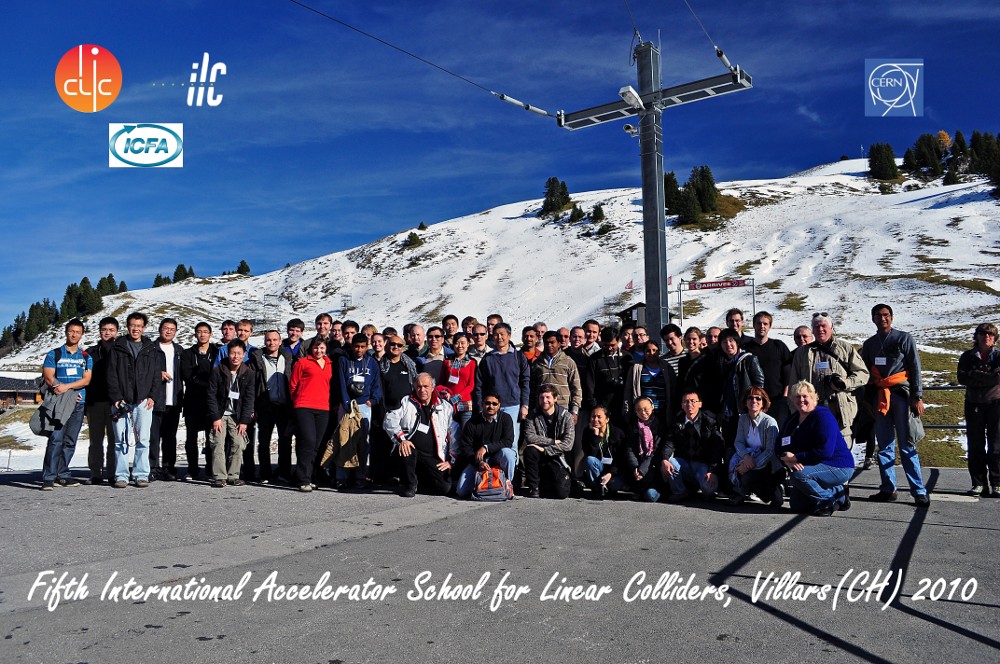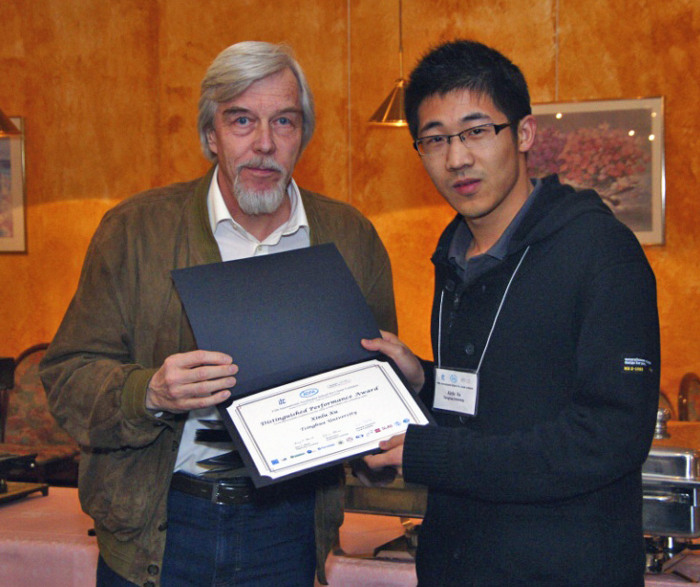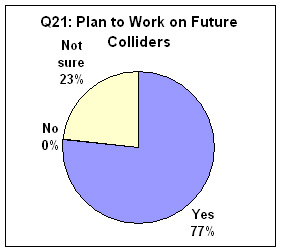Director's Corner
18 November 2010
 Barry Barish |
Linear Collider Accelerator School
Following the very intense joint ILC/CLIC workshop (IWLC10) in Geneva last month, I went around Lake Geneva to Villars-sur-Ollon. Our fifth Linear Collider Accelerator School, and the first one sponsored jointly by ILC and CLIC, was held there from 25 October to 5 November 2010. This was a beautiful and comfortable setting for the school, conducive to academic teaching, situated in the mountains and fostering social interactions. In my opinion, one of the most important outcomes of the ILC Global Design Effort is the role we play in the training of future generations of accelerator scientists. The lecturers at the school are leaders of the field, the topics covered are both academically interesting and involve today's forefront research issues, the organization by Alex Chao and Weiren Chou is superb, and the combination of all these aspects has made this a very special yearly event.
The Village of Villars is a couple hours away from Geneva and is very beautiful. It overlooks the Rhône Valley, has views of Mont Blanc from parts of the village, as well as the local ski area. It may sound hard to give six hours of lectures in one day, followed by conducting an interactive homework session with the students in the evening, but in fact it was fun, and I found it a very stimulating environment for students and teachers alike. Admission to the school is extremely competitive, resulting in a highly qualified and motivated student body that comes from all over the world.
CERN was the host for this year's school and provided generous support. Hermann Schmickler of CERN served as chair of the local committee and very capably took care of the local arrangements. Rolf Heuer, the CERN Director General, has been a lecturer at several previous schools. He came this year for the final day and presented the student awards.
The school format consisted of two three-hour lectures each day, one in the morning and one in the afternoon, followed by a homework problem session, where the lecturers were available for questions.
This is our fifth school, and while the first schools were dedicated to the ILC, we have now expanded the scope to include both CLIC and the muon collider. After a set of introductory lectures, the school broke into two tracks:
- Accelerator physics for sources, damping rings, linacs and beam delivery system
- Superconducting and warm RF technology, LLRF and high power RF
Some students have come to the school twice to cover both tracks. The courses are very rigorous and an examination on the materials is given at the end of the school. The students with the best scores are given a prize.
Few universities include accelerator physics in their academic curriculums for a PhD, so the profession is made up to a large extent of researchers who have migrated into accelerator science from particle physics or some other discipline. Accelerator schools play a very important role in providing the academic training for the field, while accelerator laboratories also provide these students with mentoring to supplement that education. The Linear Collider Accelerator School provides academic training by using current state-of-the-art problems in the field. I find that the students are particularly stimulated by learning from leading accelerator scientists on topics of current interest. I am very proud of our school and am happy I was once again able to participate.
-- Barry Barish



